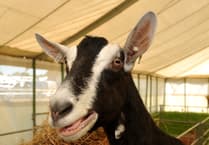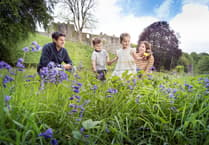IN the lounge bar of a hotel in Suffolk last year, I fell into conversation with an elderly couple. Their accents, crisply English, reminded me of characters in wartime films.
The man told me, with some pride, that his wife had worked in the main operations room on D-Day, with top brass from the Allied forces, including the supreme commander, General Eisenhower.
I voiced surprise. The elderly lady was puzzled.
I said: ?But you were there with a great man at a pivotal moment in history.?
She shrugged. ?It was just a job,? she said.
Just a job. Women were vital to the war effort. But when the guns fell silent, it was expected they would go back to the kitchen sink. Subsequent films and books trumpeted the deeds of Britain?s fighting men. Those of the women were largely ignored.
They served in the ATS, Anti-Aircraft Command, the Women?s Auxiliary Air Force, the Women?s Royal Naval Service or military nursing services.
Women at War in Uniform, by Carol Harris, goes some way to giving Britain?s serving wartime women the recognition they deserve.
She quotes a woman, who later joined the Auxiliary Territorial Service, on how women were viewed in the grim decade of the 1930s as the shadow of war loomed over Europe: ?We were the homemakers, the little women and the weaker sex.?
The demands of the engine of war changed all that. But women were still viewed as a means of releasing men for fighting while they tackled the more mundane military roles.
It was an age when class divisions were more starkly drawn. Harris reveals how among ATS county and senior commandments no qualification other than a noble title seemed necessary ? a situation that was questioned by a woman Labour MP. But the reason was often that when a company was formed, the best known female in the district had to be selected as commandant, usually a lady with a title.
Ironically, an upbringing in boarding schools with its attendant lack of privacy and bustle, meant women from the middle and upper classes were more familiar with the ATS way of life, often in poor accommodation. Those from working class backgrounds were more shocked by conditions in which they had to undress and bathe in front of others.
War and its engine of directing labour meant a new world opened for many women. Conscription for specific groups of women, aged 19 to 30 and childless, saw them plucked from their home to serve throughout the UK and beyond.
WAAFs pushed models of German aeroplanes across a large plotting table, hoping they were not headed for the home town they had left behind.
ATS morale was boosted in 1944 when Princess Elizabeth joined the service.
The chief commander of her base said that when she left, the Princess told her: ?I?d give anything I possess to be an ordinary person like some of my own friends and to be an ATS officer. ?
Ordinary? Yes they were. And exceptional, too.
l Women at War In Uniform 1939-1945 by Carol Harris is published by Sutton Publishing, price £10.99



